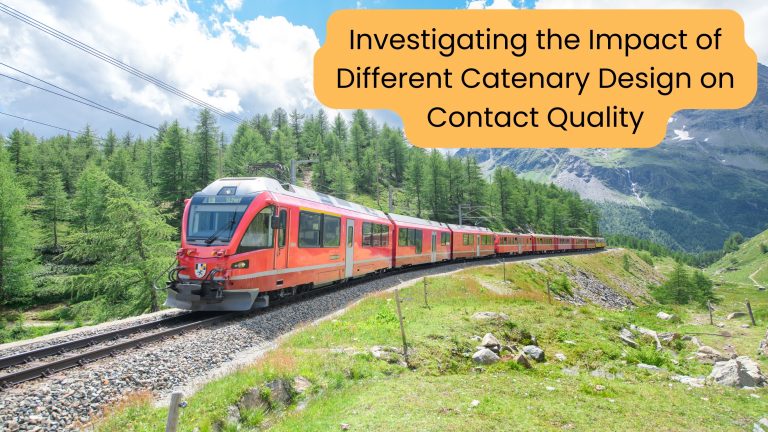Pain Points Addressed
One of the significant challenges in the railway industry is the diverse array of catenary designs and their impact on the contact quality between the pantograph and electrical wire. Inconsistent contact quality can lead to increased friction and sparks, posing a threat to efficient electricity supply.
Railway operators encounter difficulties in comprehensively comparing and understanding the effects of different catenary designs, impeding their ability to optimize rail operation in terms of infrastructure lifetime and maintenance.
Many infrastructure managers are eager to identify the catenary design, specific to their environment and operation velocity, that would result in lower operation and maintenance costs. This information could be transformative if available with transparency in the early stages of a project.
Therefore, the core concept revolves around the significance of catenary designs and their pivotal role in ensuring high contact quality between the pantograph and the electrical wire overhead. PANTOhealth introduces a simulation panel that addresses this challenge by empowering users to design, model, install, compare, simulate, and experiment with various catenary designs.
The focus is on examining critical criteria, particularly contact quality, and understanding how different designs perform at diverse speeds and operational/environmental conditions.
Previous Client Solution
Historically, the infrastructure manager, a key player in the industry, has struggled to evaluate catenary designs effectively. They often had to approach engineering houses or consultancy companies through tenders or open calls. While such consultancy providers could address their queries, the challenge arose when operational or environmental conditions changed.
Existing solutions frequently lacked the capability to comprehensively compare and investigate the impact of diverse designs on contact quality. Railway operators grappled with making informed decisions about the catenary design best suited to their operational needs. This lack of a user-friendly and informative platform hindered progress in optimizing rail infrastructure.
Our Solution: How our solution works and fits into the problem?
PANTOhealth addresses these challenges through its simulation panel, offering an informative and user-friendly platform. Users can model various catenary designs, making small modifications to observe their impact on contact quality.
The simulation panel facilitates a detailed examination of each design’s performance, particularly in terms of contact quality between the pantograph and electrical wire, and estimates the overall lifetime of the infrastructure. This empowers railway operators with the knowledge needed to make informed decisions about the most effective catenary design for their specific requirements.
Results and Impacts: What’s the result of using our solution?
The solution involves facilitating a seamless comparison of catenary designs and their impact on contact quality. PANTOhealth’s simulation panel allows users to model and visualize the final results of any three small modifications, showcasing the performance of each modification in each catenary design.
By offering this capability, PANTOhealth enables railway operators to identify the most suitable catenary design and also any modification that ensures optimal contact quality, minimum friction, reduced sparks, and increased asset lifetime.
This proactive approach contributes to the efficient and safe operation of rail infrastructure, addressing the challenges associated with varied catenary designs.

